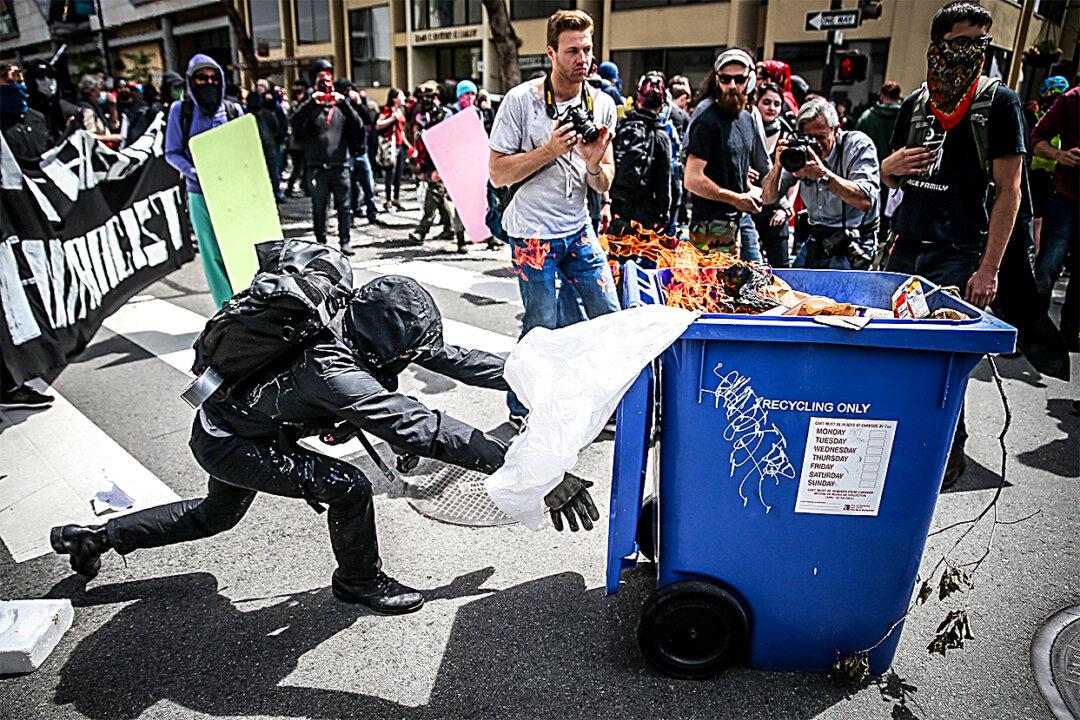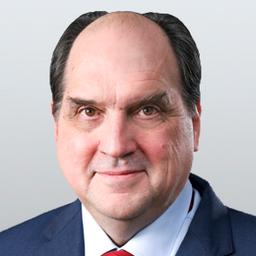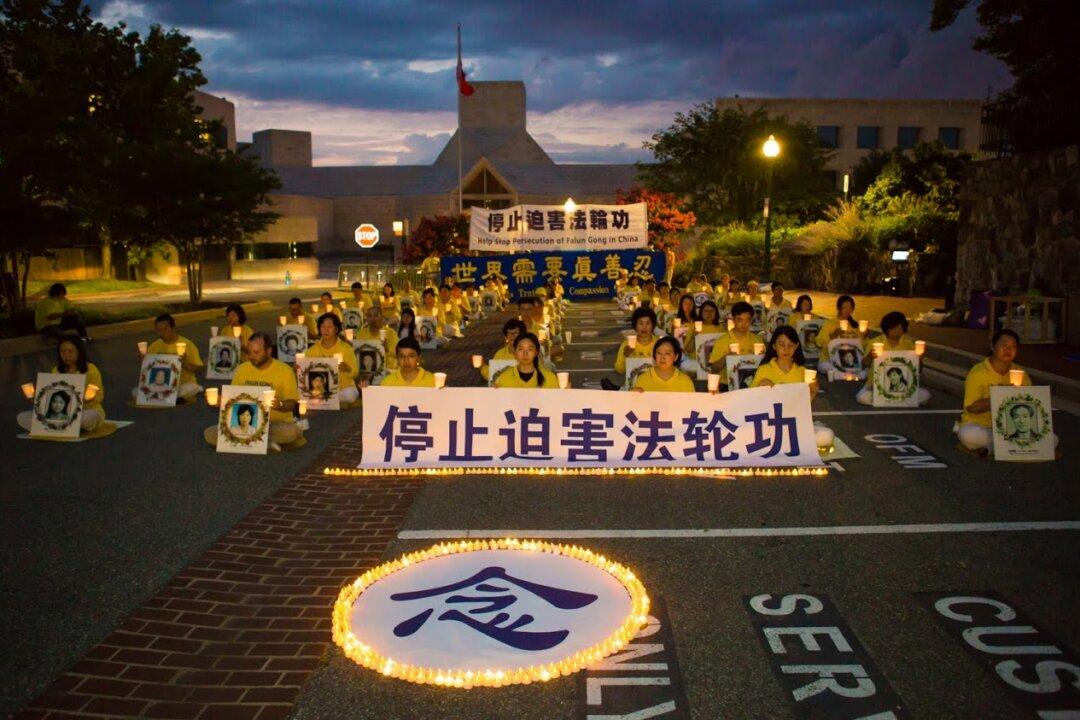The doctrines taught in our schools are now spilling out onto our streets, and political thuggery is becoming part of American life.
On April 15, in Berkeley’s Martin Luther King Jr. Civic Center Park, a free speech demonstration by supporters of President Trump quickly degenerated into a riot, as pro- and anti-Trump forces began fighting one another.
The fighting was not a surprise. Several of the Trump supporters had shown up at the event carrying homemade shields, wearing helmets of different kinds, and carrying sticks.
Arrayed against them were members of the group Antifa, which is short for anti-fascist. Dressed in black, often wearing ski masks or black bandanas over their faces, the Antifas have used what are called black bloc tactics at events across the country to shut down free speech.





